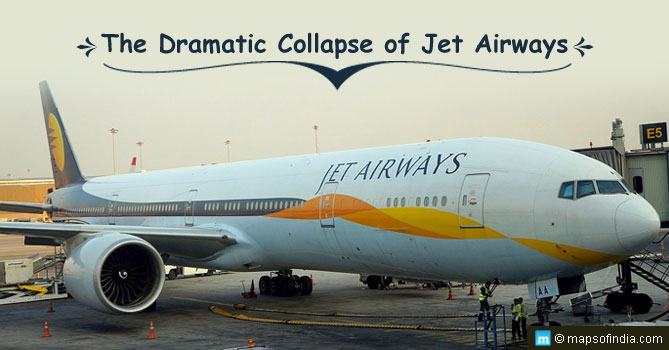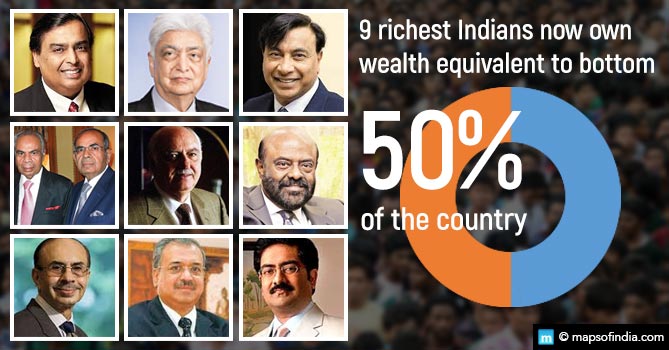Jet Airways was the brightest star in the Indian aviation sector and wanted to spread its wings and taste the global pie. However, now it is reeling under a massive debt of over Rs. 11,261 crore as per some reports, owed to a long list of Indian and foreign banks and lenders. The once-leading airline has now stopped operations. After Jet Airways was grounded, SpiceJet CEO Ajay Singh said, “Today is indeed a sad day for Indian aviation. By launching a truly world class airline, Naresh and Anita made India proud.”
From Meteoric Rise to Rough Landing
The saga of rise and fall of Jet Airways revolves around its founder Naresh Goyal. He’s considered as the reason for the rise as well as the fall of the unofficial flagship airline of India. Here is a timeline that will help you understand the entire journey of Jet Airways from boom to bust:
- Launch
Jet Airways was started by founder Naresh Goyal in 1991. It took the opportunity of private sector’s entry into the aviation industry (as per the Open Skies Policy) and consequent opening up of the economy.
- Starts Commercial Operations
Commercial operation of Jet Airways commenced on May 5, 1993. The airline grew rapidly. On January 14, 1995, it received the scheduled airline status.
- First Phase of Growth
In 1996-97, Jet Airways became the second largest airline in India by carrying 2.4 million passengers. At this time, their domestic market share increased to 20%. Their fleet size of Boeing 737 aircrafts increased to 12, with 83 flights operating daily to 23 domestic destinations.
- First Ever Loss
Jet Airways suffered their first ever loss in FY 2001-02. It happened because of the fall in demand and increase in operational cost. However, it continued to operate as a full service airline.
- International Operations
Following the government’s decision to allow private airlines to operate on international routes in 2003, Jet Airways started their international flight in March 2004. Their first ever international flight was from Chennai to Colombo (Sri Lanka). Jet Airways got permission to operate services to London Heathrow from the Ministry of Civil Aviation in January 2005. Their first ever London-bound flight flew in May 2005.
- Getting Listed on Indian Bourses and IPO Launch
On December 28, 2004, Jet Airways got listed on BSE, becoming a public entity. Their IPO was launched in February 2005, offering 20% total stake to the public. The company raised Rs. 18.9 billion, following strong demand from investors across the spectrum (including retail, institutional, and non-institutional investors). At NSE, the share of Jet Airways was listed at Rs. 1,155, increasing net worth of Naresh Goyal to Rs. 8,000 crore.
- First Ever Acquisition and the Great Gamble
On April 12, 2007, Naresh Goyal played his life’s greatest gamble by buying Air Sahara. The deal fetched Goyal 27 aircrafts, 12% of the total market share, and entry into the unexplored international routes. Air Sahara was later named as Jet Lite. This acquisition helped Jet Airways become the largest Indian airline operator in India. By 2010’s third quarter, Jet Airways was dominating with 22.6% of the passenger market share.
Many analysts believe that Air Sahara was bought at an overvalued price, and that’s what triggered the inflating debt burden of Jet Airways. Though the repercussions were felt much later, many believe the fall of Jet Airways actually started at this point.
- Fare-War and Low Fare IndiGo Gains Traction
While the total debt of Jet Airways kept mounting, the ensuing price war started by low-cost carriers hit Jet Airways at the bottom line. In fact, to curtail costs, Jet Airways was forced to layoff a number of its employees. Ultimately, in July 2012, leading low-cost carrier IndiGo amassed the largest passenger market share, dethroning Jet Airways.
- Rising Debt and Etihad Deal
During April 2013, consolidated debt of Jet Airways on its books reached more than US$2 billion. To get relief from this ever increasing debt, Naresh Goyal sold 24% equity stake to Etihad Airways for US$379 million. Goyal’s stake came down from 75% to 51%. The deal was completed on November 12, 2013.
- Mounting Losses
The low-cost carriers kept up the pressure, and Jet Airways had to enter the fare-war to check the falling passenger demand. The airline was in a serious financial mess by August 2018. In November 2018, the company posted a negative financial outlook. The company was not only unable to disburse pilot’s salaries but also delayed payments to banks. The loss reached a whopping Rs. 3,200 crore.
- Rough Landing
Bankers and board members initiated the rescue act. The board members as well as the lenders were not happy with the functioning and management style of Naresh Goyal.
Naresh Goyal (Chairman) and his wife Aneeta Goyal stepped down from the board on March 25, 2019 after failing to raise Rs 983 crore interim funding from the lenders. Jet Airways was forced to cancel all its flights (domestic as well as international) after the board was unsuccessful in bringing emergency funds to the table. Goyal’s stake dropped from 51% to 25%.
No final decision has been reached yet to bring in the required funds. Mounting losses, and non-payment of dues to the lenders and employees made the airline halt its operations. The last Jet Airways flight took off from Amritsar (bound for Delhi) at 2230 hours on Wednesday, April 17, 2019.
Conclusion
Many industry experts are still stunned after the dramatic and sudden collapse of the Jet Airways. Around 23,000 employees, including pilots, are yet to receive their salaries. Reports say Rs. 175 crores is immediately needed for paying salaries of the employees. As per reports appearing in the media, Jet Airways CEO Vinay Dube said that they haven’t received any final word from the lenders on any kind of interim funding, but assured all stakeholders that the management will not leave any stone unturned in resurrecting Jet Airways.
Read More:





